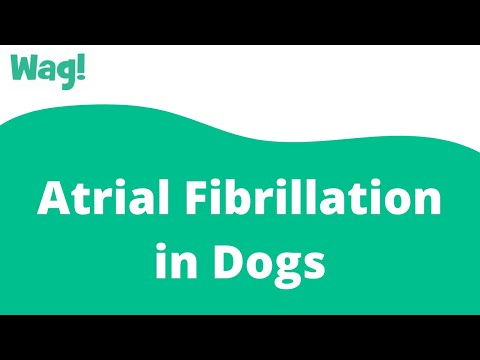How To Treat Atrial Fibrillation In Dogs: Expert Insights
Atrial Fibrillation In Dogs | Wag!
Keywords searched by users: How do you treat atrial fibrillation in dogs diagnosis and management of canine atrial fibrillation, how to treat afib in dogs, atrial fibrillation in dogs life expectancy, arrhythmia in senior dogs, atrial fibrillation in dogs symptoms, atrial fibrillation dog causes, atrial fibrillation dog ecg, atrial fibrillation dog sound
How Long Can A Dog Live With Atrial Fibrillation?
What is the life expectancy of a dog diagnosed with atrial fibrillation? A study conducted on dogs revealed some crucial findings. The research showed that dogs with atrial fibrillation have varying survival rates depending on their average heart rate. Specifically, dogs with an average heart rate below 125 beats per minute (bpm) had a significantly longer median survival time of approximately 1037 days (about 2.8 years), whereas dogs with an average heart rate of 125 bpm or higher had a much shorter median survival time of only 105 days (approximately 3.5 months). This study highlights the importance of managing heart rates in dogs with atrial fibrillation, as lower heart rates are associated with longer life expectancy. The results of this study were published on August 9, 2018.
What Is The Most Common Cause Of Atrial Fibrillation In Dogs?
Atrial fibrillation is a prevalent heart condition in dogs, and its primary cause is often associated with underlying heart disease. In many cases, atrial fibrillation develops as a secondary complication arising from pre-existing heart conditions. However, it’s important to note that, on occasion, certain large dog breeds such as Irish Wolfhounds, Newfoundlands, and German Shepherds can also experience atrial fibrillation as a primary heart issue without any preceding heart disease. This highlights the dual nature of atrial fibrillation in dogs, where it can either manifest as a consequence of underlying heart conditions or as a primary concern in specific breed predispositions.
What Is The Most Common Treatment For Atrial Fibrillation?
Atrial fibrillation, a common heart rhythm disorder, typically requires medical intervention for effective management. The choice of treatment depends on various factors, including the specific symptoms experienced and the patient’s overall health.
In most cases, healthcare professionals commonly prescribe medications to address atrial fibrillation. Two main types of medications are often utilized:
-
Beta blockers: Drugs like bisoprolol or atenolol are frequently prescribed to control heart rate and rhythm. These medications work by blocking the effects of adrenaline on the heart, helping to slow down the heart rate and stabilize its rhythm.
-
Calcium channel blockers: Verapamil or diltiazem are other medications commonly used to manage atrial fibrillation. These drugs work by regulating the flow of calcium into the heart cells, which can help in controlling heart rate and rhythm.
The specific medication recommended for an individual depends on their unique symptoms and overall health. In cases where beta blockers or calcium channel blockers are not suitable or do not provide sufficient relief, another medication called digoxin may be considered as an alternative treatment option. Digoxin helps improve the contractility of the heart muscle, which can also aid in regulating heart rate in some situations. It’s important to consult with a healthcare provider to determine the most appropriate treatment plan for atrial fibrillation based on individual circumstances.
Categories: Details 71 How Do You Treat Atrial Fibrillation In Dogs
See more here: taomalumdongtien.net

In dogs, cardioversion may be successful in returning the heart to a normal rhythm, but often the rhythm returns to atrial fibrillation in the dog. Consequently, treatment for atrial fibrillation involves the use of drugs to slow the rate. Such drugs include dilitiazem, atenolol and/or digoxin.Median survival time for dogs with mean heart rate less than 125 bpm (1037 days) was significantly longer than those with mean heart rate of 125 or higher (105 days). The results of this study show that patients with atrial fibrillation live longer with lower heart rates.Most of the time, atrial fibrillation in dogs occurs secondary to heart disease. Sometimes, in large breed dogs (Irish Wolfhound, Newfoundland, German Shepherd), atrial fibrillation occurs as a primary heart problem.
Learn more about the topic How do you treat atrial fibrillation in dogs.
- Arrhythmias (Abnormal Rhythms) in Dogs
- Heart Rate and Survival in Dogs With Atrial Fibrillation – DVM360
- Atrial Fibrillation in Dogs – VCA Animal Hospitals
- Treatments for atrial fibrillation – NHS
- Atrial Fibrillation: What You Need To Know | Blog – Loyola Medicine
- Arrhythmias (Abnormal Rhythms) in Dogs